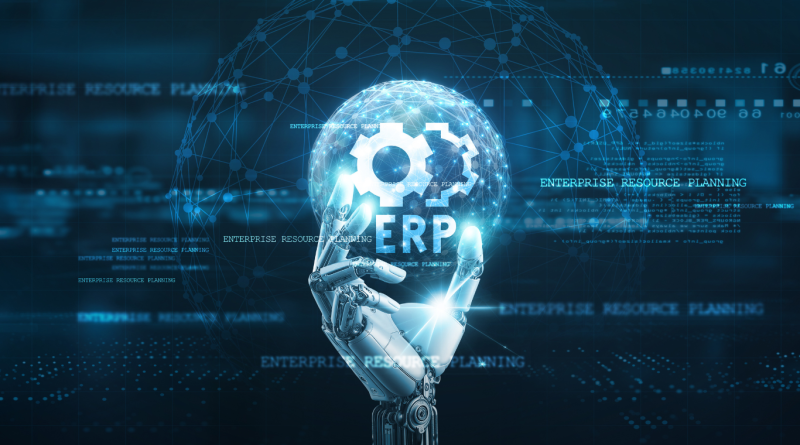ERP is one of the most prominent technical solutions that has proven its efficiency in managing various types of institutions, including schools. The implementation of ERP in schools has demonstrated a high ability to achieve integration between various departments and facilitate administrative procedures, making it an ideal model for administrative modernization in the education sector. In today's article, we will review the most important benefits and challenges of implementing ERP in schools.

What is an ERP system? Why is it important for schools?
The ERP system, as it is known, is an abbreviation for "Enterprise Resource Planning", meaning enterprise resource planning, and this system represents an integrated platform that allows all enterprise operations to be managed through a central database, including accounting, personnel affairs, inventory, study schedules, attendance and absence, academic performance, and communication with parents.
Within the context of schools, the ERP programme contributes to:
- Automation of administrative and educational processes.
- Improving the quality of reports and analyses.
- Facilitating communication between departments, teachers and parents.
- Support decision making based on accurate data.
These features help reduce waste of time and resources, and make the most of available energies, which clearly reflects administrative modernization in educational institutions.
Administrative benefits of implementing the ERP system in schools
The ERP system stands out as a powerful and integrated tool that helps manage all administrative and educational processes more effectively and efficiently. Here, we review the most prominent administrative benefits that schools gain from implementing the ERP system:
1. Data integration and accessibility
Achieving integration between the various departments and functions within the school is considered one of the most prominent administrative benefits provided by the best ERP programs in schools, especially admission and registration management, student affairs, teacher affairs, finance, human resources, and others. This integration enables the unification of databases and prevents duplication or conflict of data, and ensures the accuracy of information and the ease of updating it.
For example, when student data is updated in the Student Affairs Department, changes are automatically reflected in other relevant departments such as Transportation, Nutrition or Accounts, and the ERP system allows employees to access the information they need in a timely manner, enhancing the speed and quality of decision making.
2. Facilitating strategic management decision-making
The ERP system provides school administration with access to comprehensive and immediate reports on school performance in all its aspects, such as financial performance, attendance rates, fee collection, teacher level, and student progress. This ability to analyze data in real-time in the ERP system enhances the administration's ability to make informed and numerical decisions, such as expanding classrooms, reallocating resources, or adjusting study plans according to the needs of students and teachers.
3. Improving the efficiency of human resources management
The ERP system enables comprehensive personnel management, from recruitment to salaries, evaluations, and attendance and departure records. Management can track the performance of teachers and administrative staff, and easily analyze productivity levels and training needs. The ERP human resources system also provides the ability to prepare detailed reports on job performance, facilitating evaluation and promotion processes based on actual data rather than assumptions.
4. Improve internal and external communication
The ERP system helps facilitate communication between administration, teachers, parents, and students, through electronic portals or special applications. Parents can monitor their children's academic level, communicate with teachers, and receive notifications of attendance or school activities, and this contributes to enhancing transparency and building trust between the school and the family, and reduces errors in transmitting information through traditional channels.
5. Simplifying administrative procedures
With an ERP system, administrative procedures such as student registration, certification, class scheduling, and exam preparation become easier and faster. These processes can be performed electronically, reducing time wasted on paperwork and reducing the possibility of errors. ERP also enables the automation of repetitive tasks such as sending appointment reminders or performance reports.
6. Simplify registration and admission processes
ERP helps transform the student registration process from manual to digital, reducing administrative errors and increasing admission efficiency. Parents can submit applications and upload required documents electronically, while management can automatically track and organize applications, shortening registration time and reducing administrative congestion during peak periods.
7. Standardize procedures and reduce dispersion
Schools often suffer from multiple systems and programs used by different departments, which causes information dispersion and difficulty in coordination. In this regard, the ERP system works to unify administrative procedures and processes into a single platform, which enhances ease of communication and coordination between different departments such as student affairs, finance, and academic affairs. This standardization facilitates process management and reduces the complexity resulting from multiple systems.
8. Improving financial resource management
An ERP system helps manage financial resources more effectively by accurately and systematically monitoring budget, expenses, revenues, and salaries. Management can monitor costs and identify areas where spending needs to be improved or reduced, and in addition, ERP accounting software can help prepare periodic financial reports that in turn help in long-term financial planning and ensuring the sustainability of the school's financial resources.
Challenges of implementing the ERP system in schools
Sure! Implementing an ERP (Enterprise Resource Planning) system in schools can face several challenges, and for each challenge there are possible solutions. Here are the most prominent challenges with solutions:
1. Resistance to change by staff and teachers
- Challenge: Some school staff may refuse to use the new ERP system due to habit or fear of technology.
- Solution: Provide ongoing training courses and workshops to introduce them to the ERP system and its benefits, and encourage them to participate in the implementation process to make them part of the change.
2. Application and maintenance costs
- Challenge: The costs of purchasing, installing, and maintaining an ERP system can be high, especially for schools on a limited budget.
- Solution: Choose flexible and customizable ERP solutions, or rely on cloud systems that reduce infrastructure costs. You can also seek financial support or partnerships with service providers.
3. Integration with existing systems
- Challenge: Difficulty integrating ERP with other software or systems used by the school such as attendance or library systems.
- Solution: Choose ERP corporate management software that supports software interfaces (APIs) that allow seamless integration, or work with developers to customize integration as needed.
4. Lack of technical skills among some employees
- Challenge: Lack of sufficient experience among employees to use the ERP system effectively.
- Solution: Provide ongoing training and 24/7 technical support, as well as prepare a simplified user manual.
5. Security and data protection
- Challenge: Protect student and staff data and sensitive information from hacking or leakage.
- Solution: Implement strong security protocols, such as encryption, ensure the system is updated regularly, and use periodic backups.
6. Changing administrative processes
- Challenge: The new ERP system may change the usual way of working, which may cause confusion at first.
- Solution: Develop a clear plan to change processes, involve employees in redesigning procedures, and provide technical support during the transition period.
Conclusion:
Implementing ERP in schools is a strategic step toward modernizing and developing educational administration. It offers significant benefits in improving performance, accuracy, and transparency. However, successful implementation requires careful planning, appropriate investment, and ongoing awareness among all stakeholders to overcome the associated challenges. Ultimately, the best ERP system contributes to a more organized and effective learning environment that benefits students and the school as a whole.
Other topics:
Fekrait’s Software for Restaurant and Coffee Shops Management
Fixed Assets And Custody Management System
reference:
1. << Management Accounting>>, businessnewsdaily
2. <<Sage Business Cloud Accounting Review and Pricing>>, business

Add New Comment